
Latest Hearing Aid UK Update: 05/01/2026
Digital Hearing Aids
A brief look inside today's modern digital hearing aids
Our world is always connecting and communicating digitally. When we are in our homes, we are tuned in to digital TV, media, and sound systems.
We even drive with GPS systems, so why shouldn't our hearing aids offer digital solutions?
Today's digital hearing aids are discreet and unobtrusive, even though they include the most advanced technology out there.
Said technology assists in empowering those with hearing loss to live a better quality of life with better hearing.
This page is designed to give you some background knowledge of the current digital hearing aids on the market and to answer the most common questions on this topic.
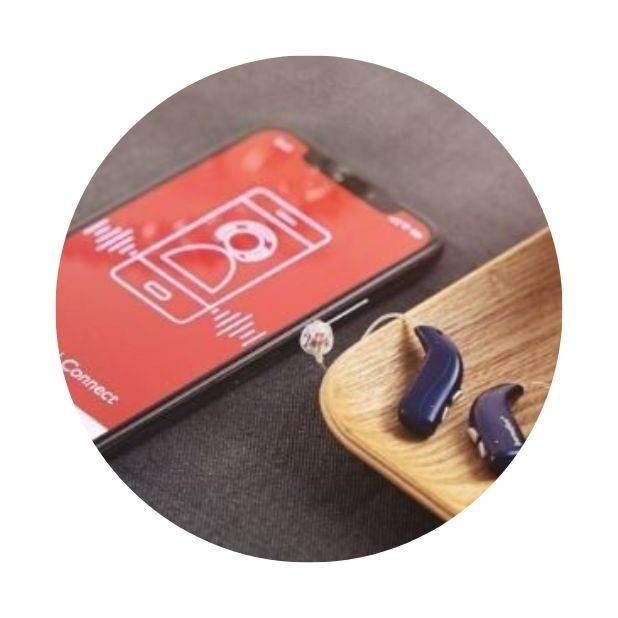
What is a Digital Hearing Aid?
A digital hearing aid is an electronic device that you either wear inside your ear or behind your ear. These types of digital hearing aids are generically called:
Behind-the-Ear (BTE) or In-the-Ear (ITE) hearing aids. A hearing aid amplifies sounds so that those with hearing loss can better hear, communicate, connect, and get the most out of their lifestyle.
However, those with hearing loss don't see hearing aids as just an amplifier - they see them as more of a lifeline.
A clever and sophisticated communication device that can empower the hearing-impaired, so they can live life to the fullest.
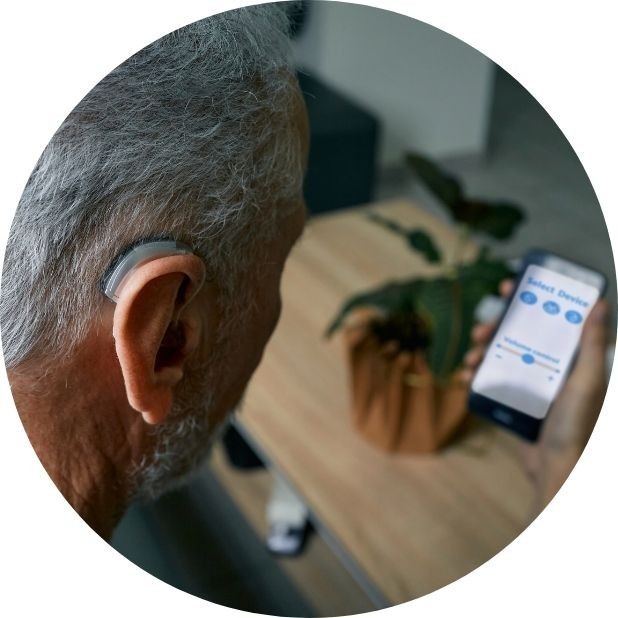
2026 Update
Digital hearing aids are essentially sophisticated computers for your ears, processing thousands of sound calculations per second to deliver crystal-clear audio tailored to your specific hearing loss.
Digital hearing aids have evolved into sophisticated AI-powered devices that adapt in real-time to your environment, connect seamlessly to smartphones and smart home devices, and deliver personalised sound processing that learns from your preferences.
Today's digital hearing aids are smaller, more powerful, and more intelligent than ever before.
As of 2026, even basic-level digital hearing aids incorporate technology that would have been considered advanced just 5 years ago.
The gap between technology levels has narrowed, with the main differences now focusing on AI capabilities, advanced noise management, and premium connectivity features rather than basic sound quality.
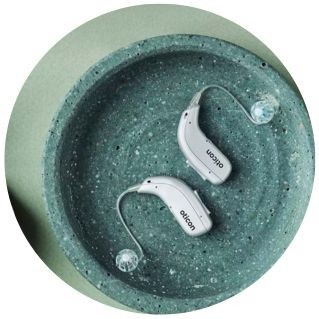
History of Digital Hearing Aids
Digital hearing aids vs analogue hearing aids
Are digital hearing aids better than analogue?
Wondering what the difference is between analogue hearing aids and digital hearing aids? Well, before the industry introduced digital hearing aids, there were only analogue devices available.
In terms of sound signals, analogue hearing aids were constant and uniform in flow. This meant that the layers of sound were missing, unlike digital hearing aids.
Another difference between digital and analogue hearing aids is that analogue hearing aids have to be adapted - the volume has to be turned up, making your hearing experience more uncomfortable. Background noise reduction was not possible either, without turning up the volume.
Analogue hearing aids are now considered obsolete technology. All hearing aids sold in the UK since the early 2000s have been digital. This comparison is provided for historical context and for those who may still be wearing very old analogue devices.
Digital vs Analogue Hearing Aids Comparison
| Features | Digital Hearing Aids | Analogue Hearing Aids |
| Sound Processing | Advanced digital processing with multiple channels | Simple amplification |
| Background Noise | Automatic noise reduction | Manual volume adjustment only |
| Customisation | Highly programmable for specific hearing loss | Limited adjustment options |
| Connectivity | Bluetooth, smartphone apps, streaming | No wireless connectivity |
| Feedback Control | Advanced feedback cancellation | Basic feedback management |
| Battery Life | Optimised power management | Less efficient power use |
So, are digital hearing aids better than analogue?
Well, in short, yes. Digital hearing aids incorporate sound signals that change and are unique, which ultimately introduces a more natural-sounding speech and audio, including depth and variation.
This means you can personalise how you hear the sound around you, due to all the digital features available.
So, which digital hearing aids are right for me? When you embark on choosing the right hearing aid for you, there are many variables to consider. Here are a few examples (and in no particular order):
The audiological requirements of digital hearing aids
Different types of hearing loss require different hearing aid fitting strategies. The hearing aids must have sufficient reserve amplification so they will last for several years, not just one or two. We would say that five years is about right.
Digital hearing aid technology and performance
This, above all else, determines the cost of the hearing aid. The higher the technology, the higher the price. This has nothing to do with the severity of the hearing loss; it’s about how well you want to be able to hear.
| Technology Level | Key Features & Best For |
| Basic Level |
|
| Mid-Level |
|
| Premium Level |
|
| Ultra-Premium |
|
Accessories available for digital hearing aids
Some hearing aids have accessories that can be purchased. These include wireless transmitters that enable the sound from a television, telephone, or another device to “beam” sound into the hearing aid.
The need for certain assistance by way of accessories can heavily influence the choice of the make and model of hearing aid required. Popular digital hearing aid accessories include:
- TV Streamers: Stream audio directly from your television
- Remote Microphones: Improve speech clarity in noisy environments
- Phone Clips: Enhanced phone call streaming
- Charging Cases: Portable power for rechargeable models
The size of digital hearing aids
As a general rule of thumb, the larger the hearing aid, the more powerful it is. Smaller hearing aids have smaller batteries, which could be difficult for people with poor dexterity. Smaller batteries don’t last as long.
There are many different styles of hearing aids. The two main categories are ITE (in the ear) and BTE (behind the ear). BTEs are becoming increasingly popular as they can be extremely small and cosmetic. Here is a list of all the different types of digital hearing aids available on the market:

Fully Digital Hearing Aids
What are the benefits of digital hearing aids?
Are digital hearing aids any good? How can digital hearing aids help?
Over the last few years, there have been some outstanding hearing aid technology developments. Innovations such as advanced sound processing and frequency responses, faster Bluetooth connectivity and compatibility.
How well do digital hearing aids work? Hearing aids are used to improve hearing and speech understanding for those with hearing loss. A hearing aid amplifies sound vibrations that go into your ear.
Those with hearing loss generally have surviving hair cells that recognise the most powerful sound vibrations and then switch them into neural signals to be sent to the brain. With that in mind, here are some of the advantages of digital hearing aids currently available in the industry:
Connectivity and control
There has been a rise in digital hearing aid apps and remote assistant features offering quick and convenient rechargeable options and artificial intelligence that learns in real time.
Digital hearing aids can be paired with smartphones, tablets, and other digital wireless devices. Connecting you to the world via streaming and entertainment.
You can also discreetly control the sound you hear and your digital hearing aid volume and features at the touch of a button, via your smartphone apps.
More comfortable and natural
Turning up the volume in traditional hearing aids made hearing experiences screechy in various environments.
Digital hearing aids allow you to customise your hearing accessibility for more comfortable listening.
Small and smart
The style of digital hearing aids has evolved over the years and now comes in smaller casings and offers discretion for the wearer - sometimes almost invisible!
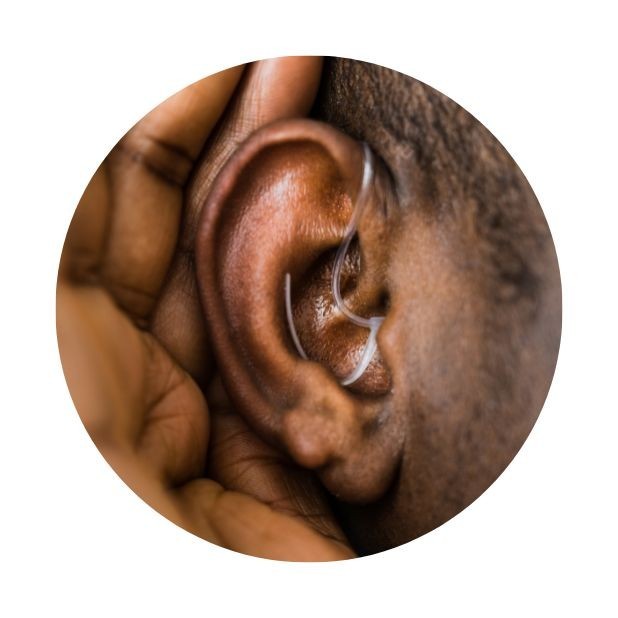
Different Types of Digital Hearing Aids
There is now a huge selection of digital hearing aids available on the market today that compliment, not just different levels of hearing loss, but deliver connectivity needs and enhance lifestyles.
Digital hearing aids pair with smartphones and interact with other Bluetooth devices within our homes.
Click on the links below to discover other types of digital hearing aids:
►Click here to read about rechargeable digital hearing aids
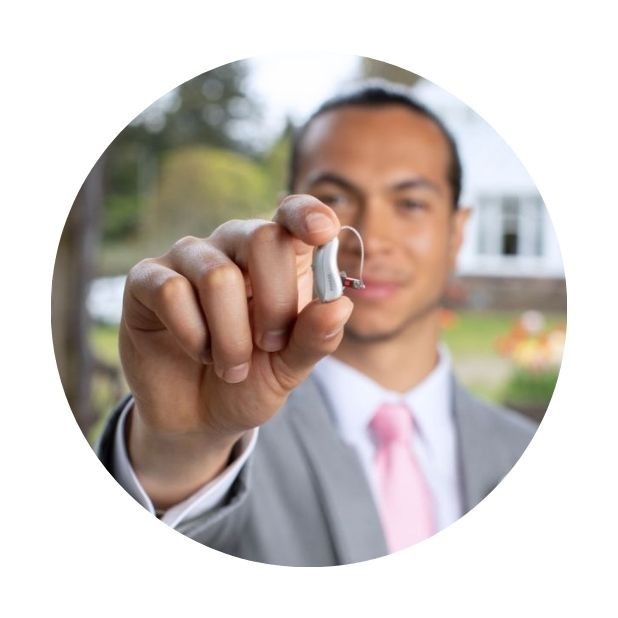
Digital Hearing Aid Quality and Clarity
The better the quality of the hearing aid, the better the sound and the more natural your listening experience will be.
Device features like noise management, feedback manager, automatic volume regulator, and bandwidth make a realistic soundscape possible.
Modern advanced hearing aids offer an impressive range of features, settings, and personalised options, so the wearer can experience the best possible sound for their needs and connect wirelessly to devices.
All digital hearing aids analyse, filter, and boost all relevant sounds. The sound you hear is all based on the way your hearing aids have been programmed.
Your audiologist will program your hearing aids to suit your hearing needs, based on your type of hearing loss.
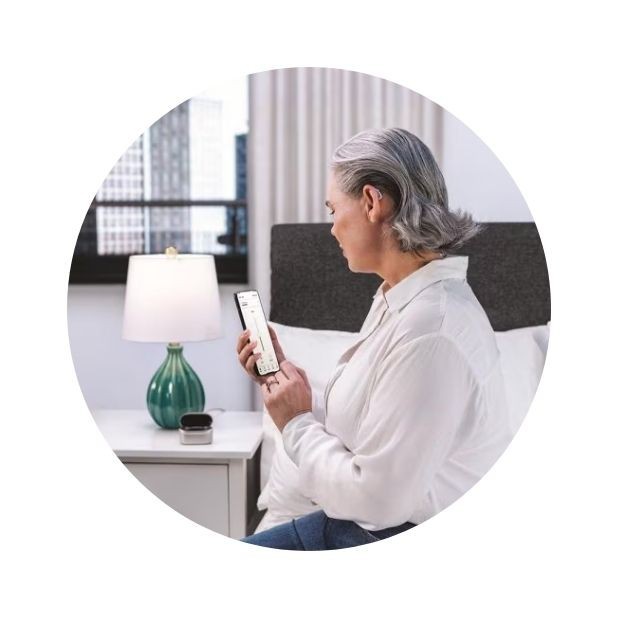
Modern Digital Hearing Aid Features
Today's digital hearing aids incorporate advanced technology that was unimaginable just a few years ago:
Artificial intelligence, machine learning, and connectivity
- Real-time environmental adaptation
- Learns your personal preferences over time
- Automatic program switching based on location
- Universal Bluetooth compatibility (both iPhone and Android)
- Direct streaming from smartphones, TVs, and tablets
- Integration with smart home devices
Health monitoring and rechargeability
- Some models now include fall detection
- Step counting and activity tracking
- Emergency alert capabilities
- 24+ hours of use per charge
- Lithium-ion batteries lasting 4-6 years
- Portable charging cases for on-the-go power
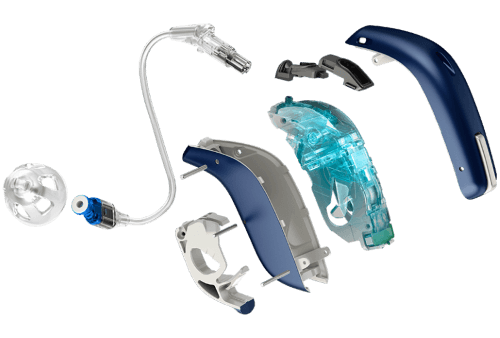
How Digital Hearing Aids Work
The functions of the main digital hearing aid parts
Digital hearing aid parts
In all good and modern digital hearing aids, there are basic components - microphones, amplifiers, loudspeakers, batteries, and processing chips.
The processing chip assists the advanced technology, and the batteries provide the power to do so. The three main pieces of technology that ensure the functionality of the hearing aid are the microphone, amplifier, and speaker.
How do hearing aid amplifiers work? The microphone receives the sounds, switches the sound waves into electrical signals, and transmits them to the amplifier, which then increases the power and level of the signals and finally sends them to the ear through the speaker.
A simple breakdown of how a hearing aid works
- Small microphones pick up the sound around you. The microphone converts these acoustic signals into electrical signals.
- These sounds are analysed by a processing chip and these processed sounds are then sent to the amplifier. Many modern hearing aids incorporate digital signal processing technology that analyses and processes electrical signals, making adjustments based on the individual's specific hearing needs.
- The amplifier increases the strength of the signals while maintaining their clarity and fidelity. Amplified sounds are then sent to the loudspeaker.
- Then the sounds are sent by the loudspeaker into the inner ear, through tubing in an ear mould in the ear canal, or through a thin wire to a receiver in the ear.
- In the inner ear, the receiver converts the electrical signals back into acoustic signals, which are then directed into the ear canal.
- Impulses are finally sent to the brain, where they are processed.
Think of it like a sophisticated computer that processes thousands of calculations per second - your digital hearing aid continuously analyses your environment, separates speech from noise, and delivers personalised sound enhancement in real-time.
Conclusion
Hearing aids are highly customisable electronic devices designed to improve the hearing ability of individuals with hearing loss. They work by amplifying sounds and delivering them directly into the ear.
The settings and programming are adjusted by a hearing care professional to match your specific hearing loss, lifestyle, and preferences. This is why regular visits to a hearing healthcare provider are recommended for proper fitting, adjustment, and ongoing support.
Digital hearing aids represent a significant advancement in hearing technology, offering not just amplification but intelligent sound processing, connectivity, and personalisation that can transform your quality of life.
Ready to take the next step? Book your free digital hearing aid consultation today. Call us free on 0800 567 7621 for support and advice, as well as to put you in touch with your local audiologist for your future hearing healthcare needs.
Benefits of Digital Hearing Aids
- Selectively amplifies sounds for a more advanced listening experience
- Reduces feedback like wind and noise
- Automatically adjusts the volume to the environment you are in - even on the go
- Uses directional microphones to better understand where sound is coming from and to give you a full soundscape
- Improves sound quality - often in real-time
Our specialist service includes:
Do not spend hundreds of pounds without getting a second opinion from us.
Please call us on 0800 567 7621
 Not only are the prices great, but the service is fantastic! Many thanks to your team.
Not only are the prices great, but the service is fantastic! Many thanks to your team.What's included in our hearing aid prices?
Common questions about digital hearing aids
What about the cost of digital hearing aids? The biggest stumbling block to seeking help with hearing loss is the cost of digital hearing aids. They are an investment, especially when most people need two hearing aids but the improvement in the quality of life they give is priceless. Digital hearing aid prices do vary depending on manufacturer, style, technology, connectivity, level of hearing loss and much more.
What digital hearing aids with Bluetooth are available?
What are the different types of Bluetooth hearing aids? To find out more about Bluetooth hearing aids, how they work, Bluetooth hearing aids for iPhone, Bluetooth hearing aids for Android and Bluetooth hearing aids for Any Phone -
What manufacturers make digital hearing aids?
What about digital hearing aid manufacturers? Below are links to the digital hearing aid manufacturers we have available and the main brands within the industry:
Can digital hearing aids be recycled?
Digital hearing aids never usually get collected from your own home or even recycling points, but you can sometimes send them back to the hearing aid manufacturer, donate them or send them to charity.
Other places include: Your local GP, NHS audiology department and private audiologist.
Do digital hearing aids use batteries?
So, do digital hearing aids need batteries? In short, yes they do - as do all technical devices. Hearing aids use different sizes of batteries depending on the technology features and size of the device.
Modern-day hearing aids have lithium-ion batteries and rechargeable options available, so no need to replace your batteries - simply charge and go!
What is the life expectancy of digital hearing aids?
Modern digital hearing aids typically last from five to seven years, though advances in rechargeable battery technology and durable materials mean some devices remain functional even longer.
We recommend reviewing your hearing aids with your audiologist every 3-4 years to ensure they still meet your hearing needs and to assess whether newer technology would provide meaningful benefits.
Factors affecting lifespan include how well you maintain your devices, the quality and technology level of the model, and regular wear and tear.
When did digital hearing aids come out?
The most impressive advancement in the audiology industry was when digital hearing aid technology was introduced. Oticon launched the first fully digital hearing aid in 1996 (though the technology was developed in 1995), marking a revolutionary shift from analogue amplification.
Since then, digital technology has evolved dramatically—today's 2025-2026 hearing aids incorporate artificial intelligence, machine learning, and sophisticated sound processing that would have been impossible 30 years ago.
Other pages you might find useful
Ask the Experts
6 Morton Lane
Walkwood
Redditch
Worcestershire
B97 5QA
Latest Launch
When we refer to a product as 'Latest Launch', we mean it is the latest to be released on the market.
New
When we refer to a product as 'New', we mean that the product is the newest hearing aid model on the market.
When we refer to a product as 'Superseded', we mean that there is a newer range available which replaces and improves on this product.
Older Model
When we refer to a product as an 'Older Model', we mean that it is has been superseded by at least two more recent hearing aid ranges.
